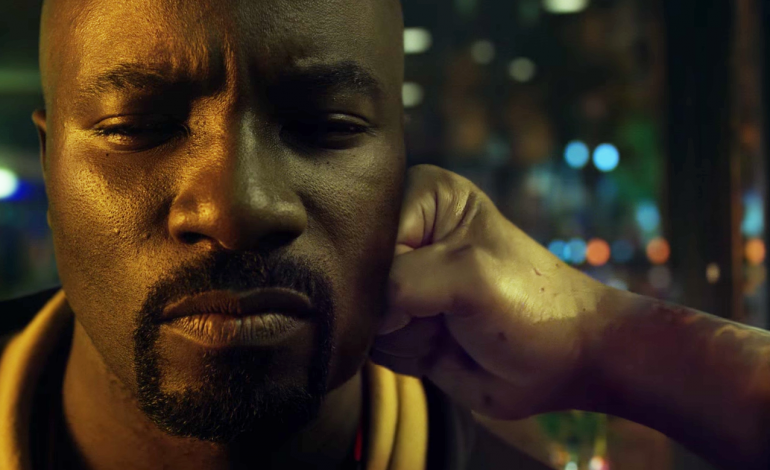

Ever since audiences got a glimpse of Luke Cage in the Netflix orginal series Jessica Jones, they have been waiting anxiously to see the steel skinned hero branch out and tell his own tale. His intimidating demeanor, coupled with his relatable nature and traumatic past makes his character incredibly captivating. Luke Cage is shaping up to be the next big hit on Netflix, but aside from the action, style, and mystery, there is another aspect of the series that creator Cheo Hodari Coker wants to make shine. According to TIME, Coker wants to Luke Cage to do for Harlem what “The Wire did for Baltimore”, by capturing and examining the heart and essence of that neighborhood in New York City.
Coker did not waver on his goal as Luke Cage moved from concept to completion, he kept his word to Netflix and the people of Harlem, hiring music producers Adrian Younge and Ali Shaheed Muhammad (A Tribe Called Quest) to write the score for the show and to recruit other artists like Faith Evans and Raphael Saadiq to leave their mark on the project, adding a sense of authenticity. “I never wanted it to feel like a cliché: Let’s use hip-hop because it’s black urban social,” said Coker, “it had to be hip-hop from a certain area that resonated.” Even the small details were important, like making sure the barbershop banter was accurate, and instructing the prop master to carefully select which books adorned the shelves of Cage’s book shelf, like Ralph Ellison’s Invisible Man.
Coker said “I called our writers’ room the Danger Room. In X-Men, the Danger Room is this place where the X-Men train and fight each other and work out their powers. Our writers’ room was majority African American—which is a rarity on television—but it was also diverse in every way. When it came to ideas, everybody had their own power. There was beautiful conflict when it came to story.” A trend that has been important in representing a more honest and accurate portrayal of a certain culture. Shows like Donald Glover’s Atlanta have also comprised an all black team of writers, in order to have a unified perception of the world they are trying to create.
An important part of Cage’s character is that the man is bulletproof, and wears a hoodie, an article of clothing that has become topic of debate and profiling. This aspects are something that Coker and his team used as starting points to open up a deeper discourse. “What if you introduce a bulletproof character into a social ecology that isn’t bulletproof? How does he affect the police? The streets? People in the neighborhood who have turned a blind eye to crime in order to survive?”
The struggle between community and the police is central to the story of Luke Cage. Getting into the raw and real parts of life and society is the goal. Yes, Luke Cage may be about a man who can take a bullet, but he is just one person in a city of many who do not have the ability to walk away from violence unscathed.
Catch the premiere of Luke Cage on Netflix this Septemeber 30.

